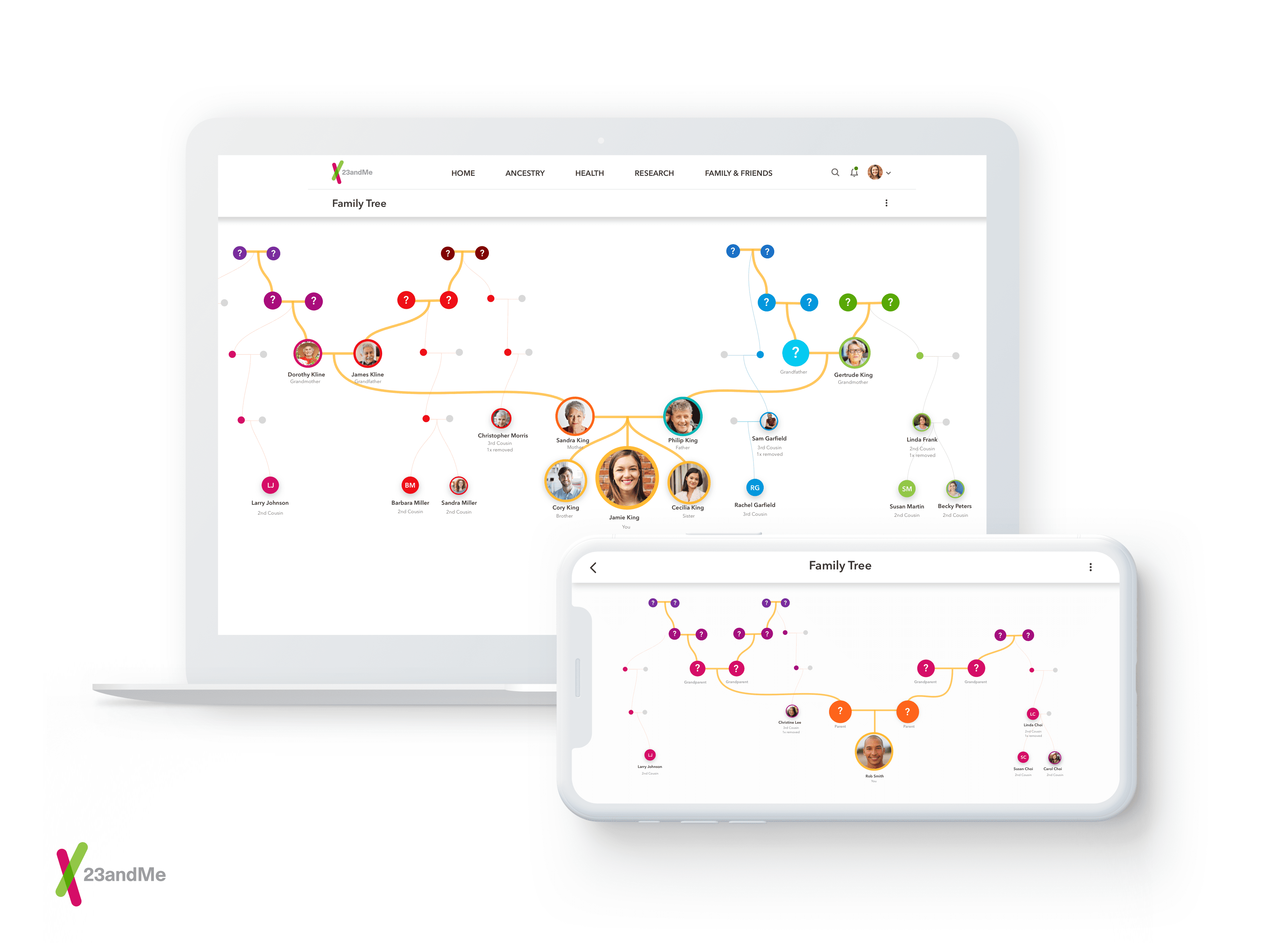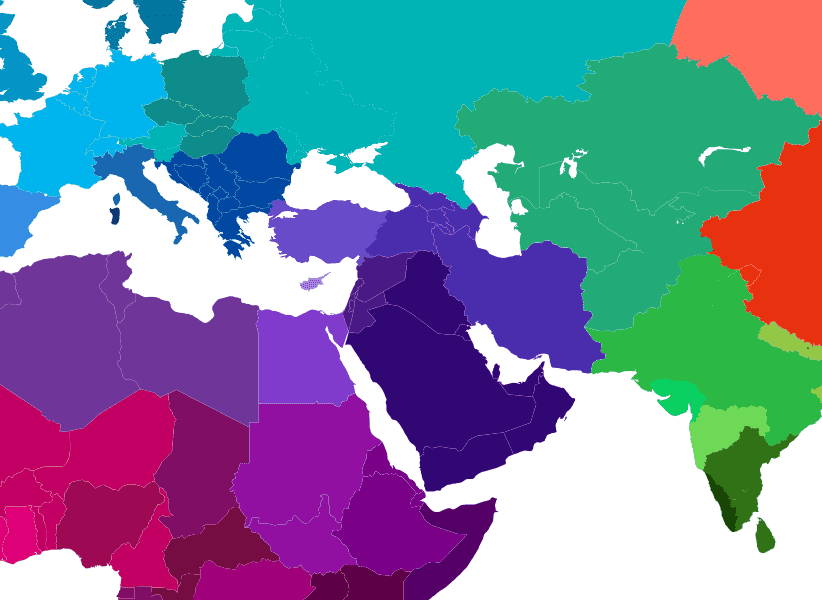Already among the most comprehensive DNA ancestry tests on the market, 23andMe is updating its ancestry offerings, adding new populations in South Asia, North Africa, and Western Asia, and an innovative new Family Tree.
This update expands the number of regions covered worldwide to more than 1,500 and introduces a new Family Tree builder that is automatically assembled based on a customer’s DNA. The update will also eventually include more than 30 trait reports for Ancestry Service customers at no additional cost.
“This is another step in our constant push to improve the granularity of ancestry results, as well as folding in even more engaging tools and content for our customers, said Hilary Vance, a 23andMe Ancestry Service product manager.”
Ancestry Composition Update
This is 23andMe’s second major update to its Ancestry Composition tool in less than a year, layering additional detail into the tremendous offerings already available to customers.
This new data will give a more granular breakdown of Ancestry Composition results for customers with Central Asian, South Asian, Western Asian, and North African ancestry, breaking those regions into more than a dozen new populations. To provide these more specific results and improve our research, we’ve undertaken a number of programs to diversify the 23andMe database. Data from one of our most recent initiatives, the Global Genetics Project, is now being used to update reference populations in the new regions.
More Regions
For example, what was previously the “Broadly South Asian” population will now be broken into seven more granular populations: Central Asian, Northern Indian & Pakistani, Bengali & Northeastern Indian, Gujarati Patidar, Southern Indian Subgroup, Southern Indian & Sri Lankan, and Malayali Subgroup.
We are also expanding the number of populations in North Africa and Western Asia to eight: Peninsular Arab, Levantine, Egyptian, Coptic Egyptian, North African, Cypriot, Anatolian, and an Iranian, Caucasian & Mesopotamian population.
We previewed these changes in our beta testing program earlier this year, previously on the blog, but we’ve adjusted that beta version based on feedback from some of the customers who tested it.

Now, customers may also see more granularity in their Ancestry Detail Reports, which look at where your more recent ancestors may have lived within the last 200 years — down to state, county, or even city. That information is displayed on interactive maps near the top of the Ancestry Detail reports.
For example, a customer with Indian ancestry could see evidence of recent ancestry from Uttar Pradesh, Rajasthan, or Delhi in Northern India.
 Beyond this latest update, 23andMe has also been busy adding in more detail and features to its ancestry offerings. Over the last year or so, we’ve added recent ancestral locations, additional African and East Asian populations, and new interactive maps. In addition, we designed a new Ancestry Overview page to help customers more easily explore and access their reports.
Beyond this latest update, 23andMe has also been busy adding in more detail and features to its ancestry offerings. Over the last year or so, we’ve added recent ancestral locations, additional African and East Asian populations, and new interactive maps. In addition, we designed a new Ancestry Overview page to help customers more easily explore and access their reports.

These pages offer customers an opportunity to not only connect with their own heritage, but also to explore other cultures around the world.
Family Tree
Your family tree is written in your DNA, and 23andMe researchers have developed an algorithm to help you read it.
Instead of relying on customers to painstakingly enter names and dates—or track down records—just to get started, 23andMe’s new Family Tree does it for you using your genetic connections and DNA Relatives.

With the click of a button, your genetic family tree is built automatically by an algorithm that predicts relationships based the DNA shared between you and your DNA Relatives. The size of your family tree depends on how many connections and DNA Relatives you have close relationships with in the 23andMe database. Participating in 23andMe’s DNA Relatives tool helps improve the experience. Customers will also be able to add names of relatives, or ancestors, to the family tree whether or not those individuals are on 23andMe. As the 23andMe database grows, customers may see their trees expand.
We created this new feature because we heard from customers who want to understand their recent family history, but don’t want the hassle of building a traditional family tree from scratch. The team is also working on additional functionality, such as the ability to edit your predicted relationships, which is expected to roll out in the coming weeks. 23andMe’s Family Tree offers a simple friction-free option, and a beautiful way to visualize how you connect with DNA Relatives.
Traits
DNA enhances our knowledge of our ancestry and family connections. It can also tell us more about the genetic underpinnings of our traits. Those include traits that affect our appearance, or our senses, or our behaviors.

With this latest update, 23andMe is now folding in more than 30 trait reports as part of our ancestry offerings. All Ancestry Service customers will have access to these trait reports in the coming months. These reports — including your genetic likelihood of disliking cilantro, your likelihood of having a dimple or preferring chocolate over vanilla ice cream — offer up a fun way to explore what else you can learn through your DNA.
Your traits are also intricately connected to family, passed down over the generations from your parents and grandparents and often shared with siblings and cousins. So, understanding your traits gives you another dimension to understanding your family connections.
It’s also a great introduction to how lifestyle, environment, and genetics work together to influence who we are.
Exploring Your Ancestry with 23andMe
23andMe’s genetic ancestry offerings open the door to exploring your genetics.
With innovative and scientifically robust features, more than 1,500 geographic regions to connect with, more than 30 trait reports, and an innovative genetic Family Tree, 23andMe offers more specificity, more interactivity, and more to explore.
23andMe customers can go to their Ancestry Overview to start exploring. Not yet a customer? Find out more about 23andMe’s ancestry offerings here.




